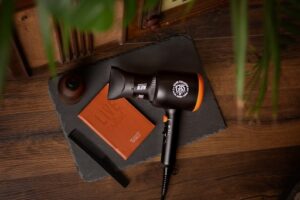Heat & Cold Treatment for Killing Mold
Mold spores are present everywhere, and so is the risk of mold. The only reason we aren’t covered with mold is that its spores don’t always land on a surface suitable for growth. This prevalence of mold may mean that its treatment may be much more difficult than simply scraping it off.
reason we aren’t covered with mold is that its spores don’t always land on a surface suitable for growth. This prevalence of mold may mean that its treatment may be much more difficult than simply scraping it off.
Mold removal companies have a slew of techniques that they can use to help you get the desired results within your budget and time frame. While some may involve the use of toxic chemicals (which may have long-term impacts), other techniques may take longer to take effect but leave no residue and are much safer to be around.
Studies suggest that mold grows and thrives in warm temperatures. However, going beyond the 140-160°F (60-71°C) can kill mold and damage their spores beyond the point of reproduction. However, some strains create a thick layer around them comprising of layers made specifically to prevent heat damage. For these mold strains, you may need to use the cold treatment.
In this article, we will take a closer look at the heat and cold treatment for mold removal.
Can Heat & Cold Really Help With The Mold Removal Process?
Heat is a very good way to kill mold. As an experiment, you can turn on your blow dryer at the hottest setting over a spot of mold to see how the mold starts shriveling.
Note: This is not a remedy for mold spores. Blow dryers can only produce temperatures of up to 140 degrees Fahrenheit. If you really want to see how heat can kill bacteria, use a heat gun.
While heat is a great way of killing mold off completely, there is no guarantee that it won’t return, especially if the heat didn’t kill off its root system. To prevent re-growth, experts often use the cold treatment before using the heat treatment.
Mold can’t grow below forty degrees Fahrenheit, which is why most refrigerators are set at thirty-nine. By freezing the mold first and then using heat to kill it, experts can get rid of their heat-resistant outer layer, along with making sure their root system becomes brittle. When exposed to heat, the brittle root system expands and breaks down completely.
While heat and cold are effective against mold, they aren’t as reliable for mold removal as fungicides.
Using Heat for Mold Removal
The goal of using the heat method is to avoid using chemicals and the risk of leaving behind dangerous products at your home. A few techniques that experts use if you choose to go with the heat treatment for mold include the use of:
- Dryers. This method is particularly useful for removing molding on clothes, toys, or other small (and preferably water-safe) materials. You can put the moldy item in a dryer for 20-25 minutes on the highest setting and disinfect it afterward.
- Ovens. While your oven is perfectly capable of killing mold, if not used properly, the technique can also render your items useless. Only use things that can survive the hot oven temperature, set it on the low setting, and place them inside for 15-20 minutes.
- Hair Dryers & Heaters. These are also useful for smaller mold spots. All you have to do is turn it on to the highest setting and heat the surface. Keep the dryer or heater moving to ensure you don’t burn the drywall. After 15-20 minutes of constant heating, you can scrape the mold off easily.
Mold Removal With Cold
Cold temperatures alone don’t necessarily kill the mold; they inhibit its growth and spread. Cold treatments are usually used along with other techniques to ensure that spores aren’t just ‘hibernating’ but are dead.
So, why use the cold technique?
Think of it this way: cold temperatures put the mold to sleep. When you finally decide to attack the mold, you won’t risk it trying to survive by spreading its spores around. The disinfectant you use will be much more effective in the cold than in moderate temperatures.
Of course, the best way to cool down a moldy item is to put it into the freezer. However, make sure you don’t turn the freezer off while the moldy object is inside, else you risk making your problem(s) much, much worse!
Put the items in a plastic bag before putting them in the freezer to prevent the mold from spreading its pores. Make sure you use gloves and a mask to handle moldy objects, though, to avoid an allergic reaction.
Once frozen, pull the object out and use white vinegar or hydrogen peroxide to disinfect the things you placed in the freezer. It should take longer than an hour to freeze the object and about 15 minutes to completely disinfect it.
Make sure you scrub the surface properly with the disinfectant to kill the mold completely.
If you are still unsure whether the heat and cold methods are suitable for you, call 911 Restoration of New Orleans. We can help you find the perfect way for mold removal and prevention, along with giving you the necessary tips for the future.



